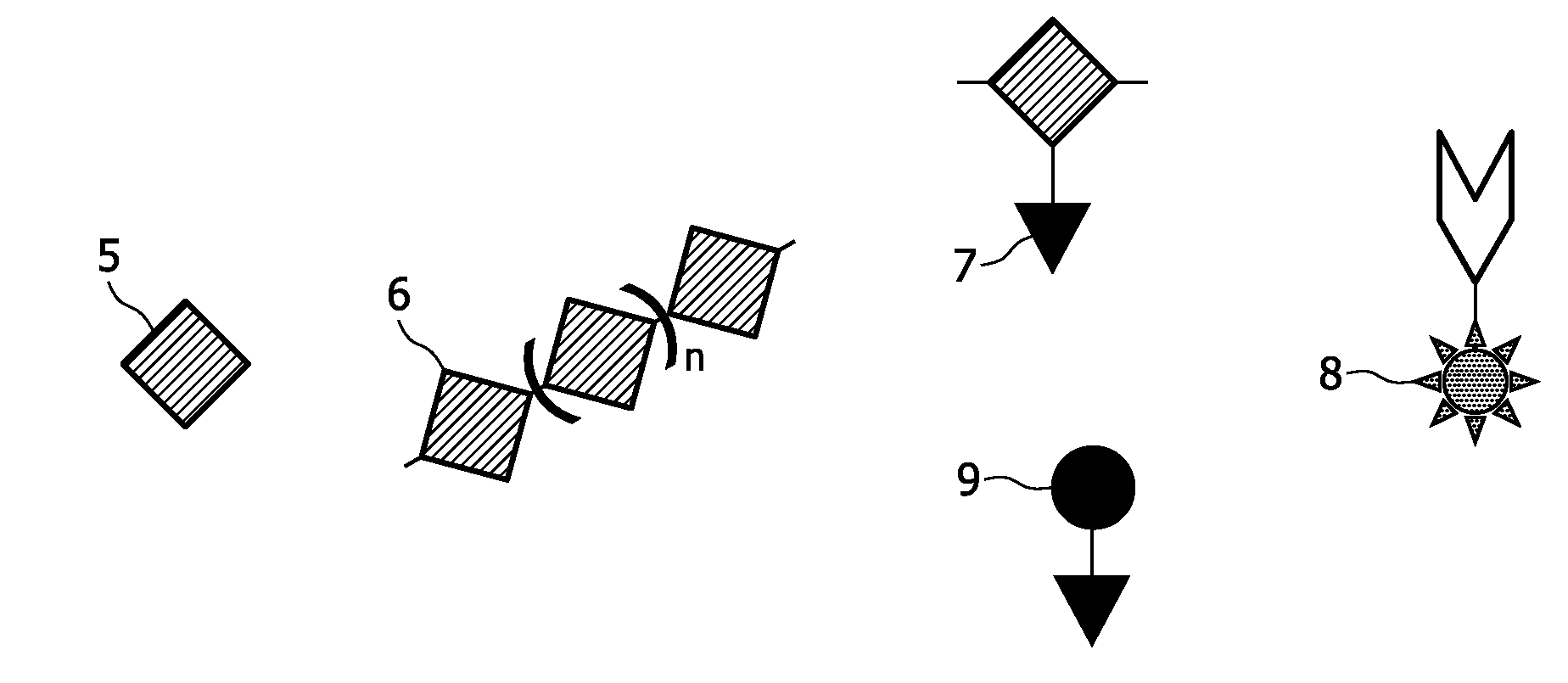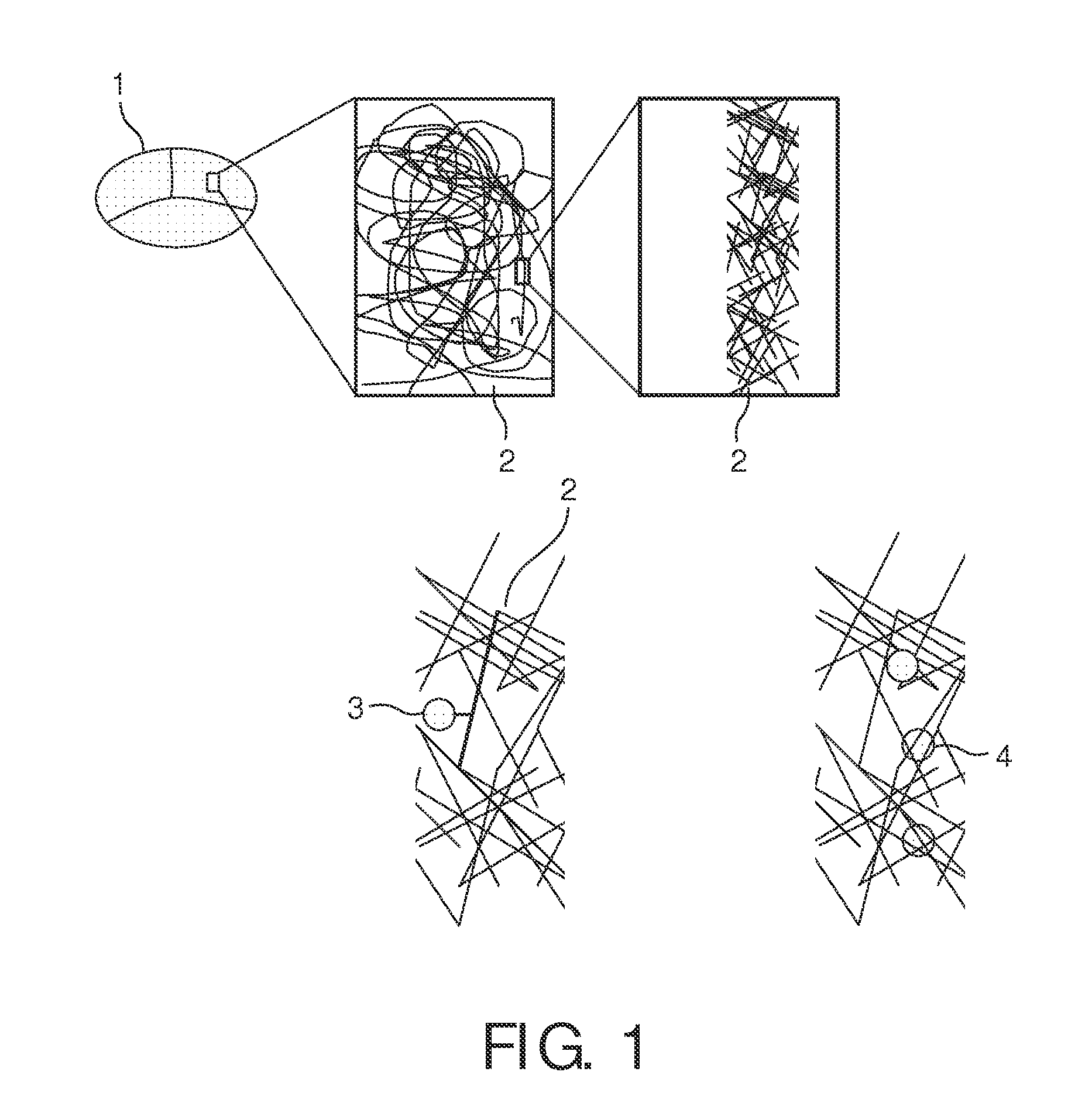Method for the production of scaffolds for tissue engineering, comprising the useof an anchoring unit, and scaffold produced therewith
- Summary
- Abstract
- Description
- Claims
- Application Information
AI Technical Summary
Benefits of technology
Problems solved by technology
Method used
Image
Examples
example 1
Labelling of a Scaffold with Click Chemistry Comprising a Covalently Bound Anchoring Unit
[0189]A copolymer of ε-caprolactone and α-bromo-ε-caprolactone (or a pure α-bromo-ε-caprolactone) is being produced, which serves as a polymer for formation of the scaffold. This process is described in examples 1.1.-1.3. Then the Br-groups of the copolymer are being substituted by azide (N3)-groups, the latter being the anchoring units of the present invention. This process is described in example 1.4. The copolymer can undergo a scaffold formation process, e.g., by electrospinning, prior or after the substitution process. Labelling agents are being bound to the anchoring units by means of a staudinger reaction.
[0190]1.1. Synthesis of α-bromocyclohexanone
[0191]α-bromocyclohexanone is synthesized according to the following procedure: To a stirred mixture of 30 g (0.306 mol) of cyclohexanone and 200 mL of distilled water, 49 g (0.306 mol) of bromine is added dropwise over a period of 5 h, during ...
example 2
Labelling of an Oligonucleotide Binding Agent with 18F
[0204]An oligonucleotide as shown in FIG. 5 is labelled at its 5′-end with 18F according to the method of Kuhnast 2003. 18F is preferably used in positron emission tomography (PET) and scintigraphy (see table 1). A complementary oligonucleotide is anchored to a scaffold material by means according to the art, thus serving as an anchoring unit according to the invention. Methods to bind an oligonucleotide to a silicate surface or to a polymer surface are for example known from the literature related to the manufacture of biochips.
example 3
Labelling of a Scaffold by Means of Gd-Labelled oligonucleotides
[0205]3.1. Synthesis of the DNA-Particle-Component
[0206]Au (Gold) particles can be prepared as described in literature (Grabar et al. (1995)). These particles are easily modified with oligonucleotides, which are functionalized with alkane thiols at one of their termini, e.g., the 5′ terminus. Here, a solution of 1.5 ml (17 nM) Au colloids (13 nm Ø) is treated for 24 h with 460 μl (3.75 μM) SH-5′-Oligonucleotides-3′ of the following kind (sequence is randomly selected here, i.e., any other sequence will do as well):
3′-GCTATCTGGCTATCTGTATCTGTTTTTTT-5′-SH
[0207]in order to provide DNA-Gold-components In such way, an anchoring unit comprising an oligonucleotide as a binding agent is obtained. See FIG. 10 for an illustration of said process.
[0208]3.2. Synthesis of the DNA-Gd-Label Component
[0209]1 μmol amine-modified oligonucleotide of the following kind (part of sequence is complementary to the above sequence):
H2N-5′-GATTCGA...
PUM
| Property | Measurement | Unit |
|---|---|---|
| Phase | aaaaa | aaaaa |
| Biodegradability | aaaaa | aaaaa |
| Covalent bond | aaaaa | aaaaa |
Abstract
Description
Claims
Application Information
 Login to View More
Login to View More - R&D
- Intellectual Property
- Life Sciences
- Materials
- Tech Scout
- Unparalleled Data Quality
- Higher Quality Content
- 60% Fewer Hallucinations
Browse by: Latest US Patents, China's latest patents, Technical Efficacy Thesaurus, Application Domain, Technology Topic, Popular Technical Reports.
© 2025 PatSnap. All rights reserved.Legal|Privacy policy|Modern Slavery Act Transparency Statement|Sitemap|About US| Contact US: help@patsnap.com



